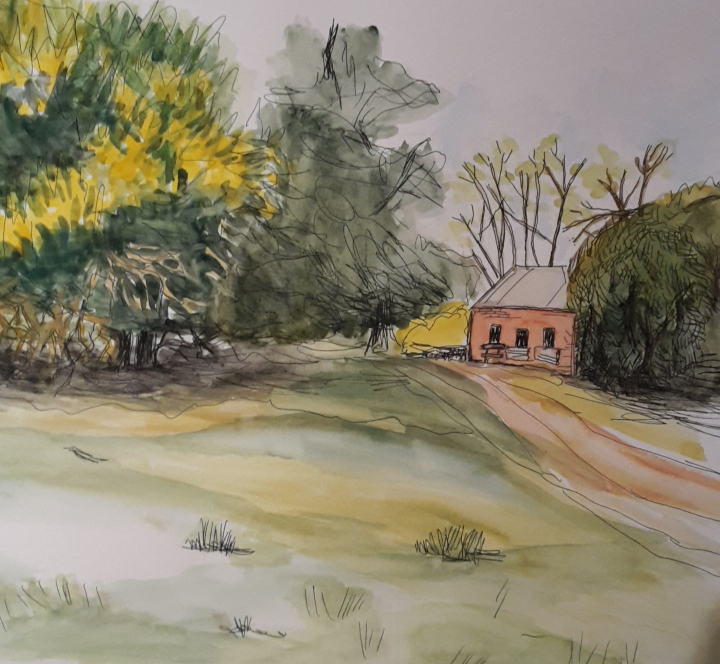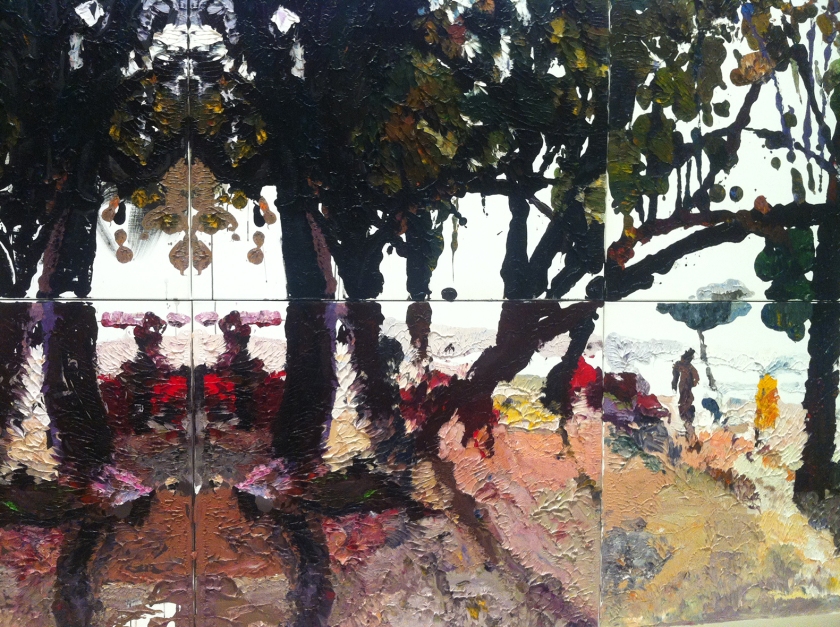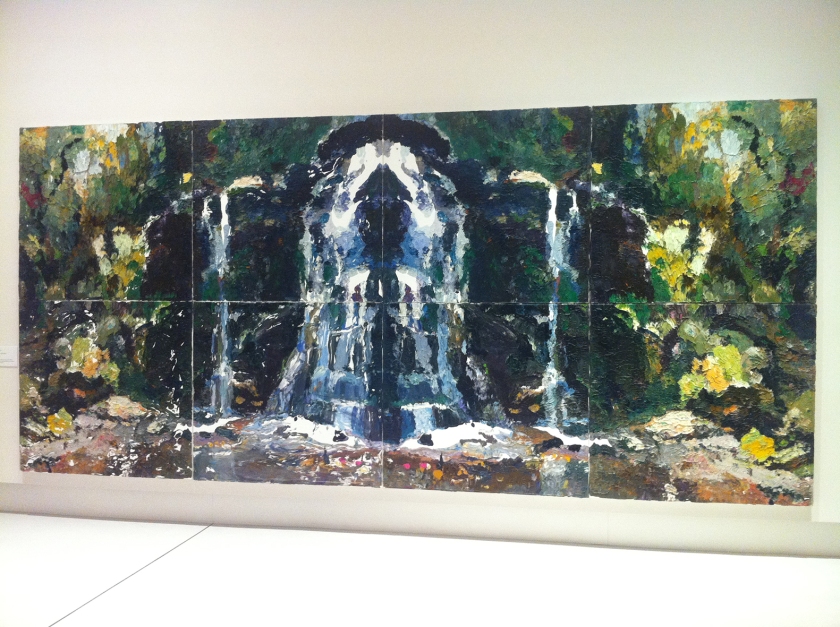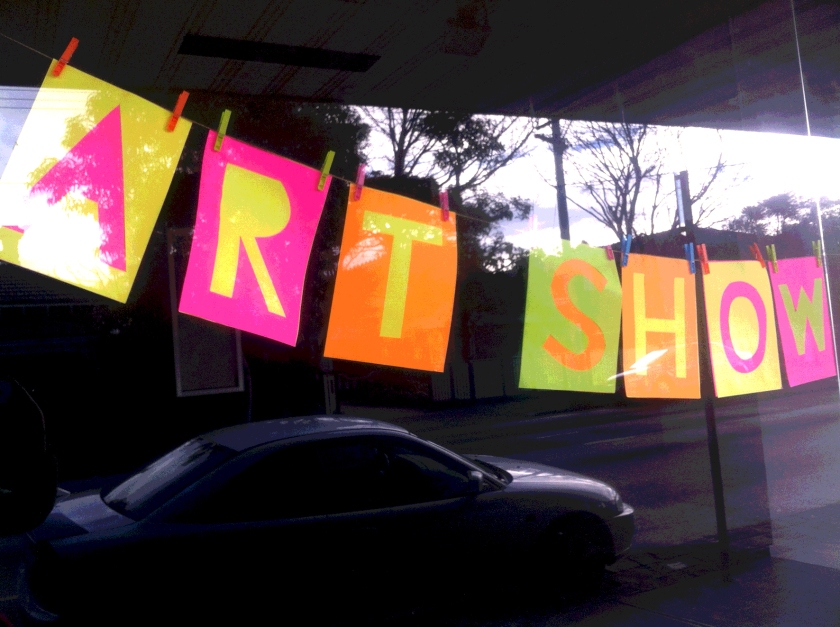A few weeks ago now I visited the Monet exhibition at NGV. Absolutely loved it. I remembered seeing some of his paintings in Paris years ago at the Musée d’Orsay and L’Orangerie, but it was lovely to see so many of his paintings here in Melbourne.
The cafe was appropriately decked out with orchids…

It was interesting to see some works I hadn’t seen before, like the landscape ‘Field of Yellow Irises at Giverny’ which had a freshness in the bright yellow, green and pale blues, and a beautiful sketchy roughness. There were also paintings of weeping willow trees in reds, browns and greens that I’d never seen before.
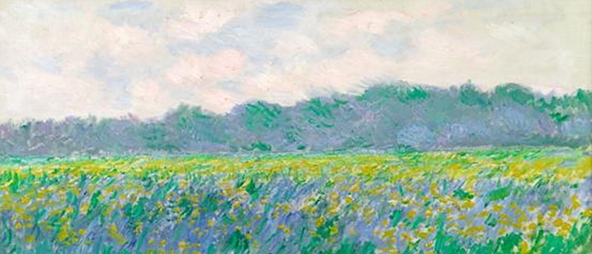
One of my favourites was a large painting of water lilies and agapanthus in greens, purples, yellows and pinks. I loved the unfinished section in the in the bottom corner that showed bare canvas. When you look at his large almost abstract portrayals of reflections on water and lilies, you can see he was a forerunner of abstraction.

There was also a beautiful video of Monet’s garden. At the end of his life Monet had cataracts and after being operated on, his colour perception changed dramatically – what a terrible thing to happen to a master of colour! The notes said he wanted to destroy some of his earlier paintings, but fortunately he didn’t. His round wire-framed glasses are displayed in a case along with a wooden palette and a pipe. The exhibition runs until 8 September.
